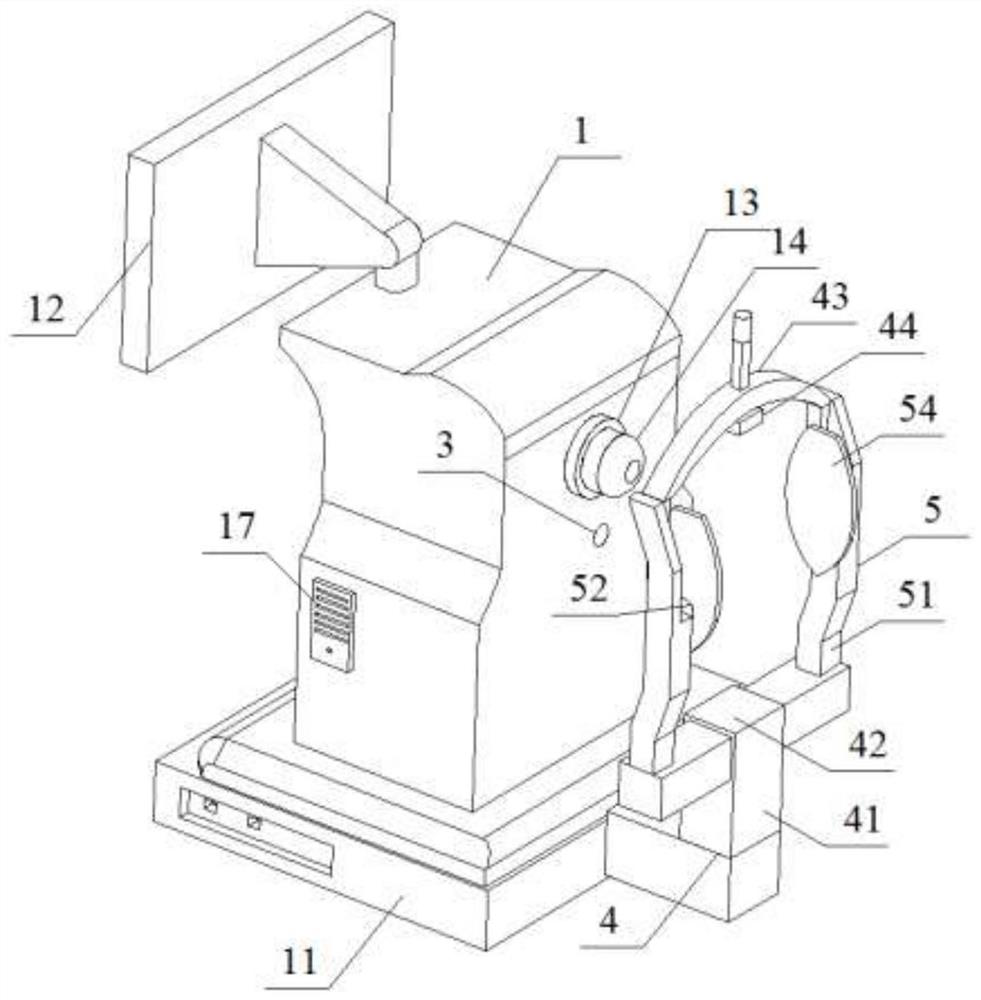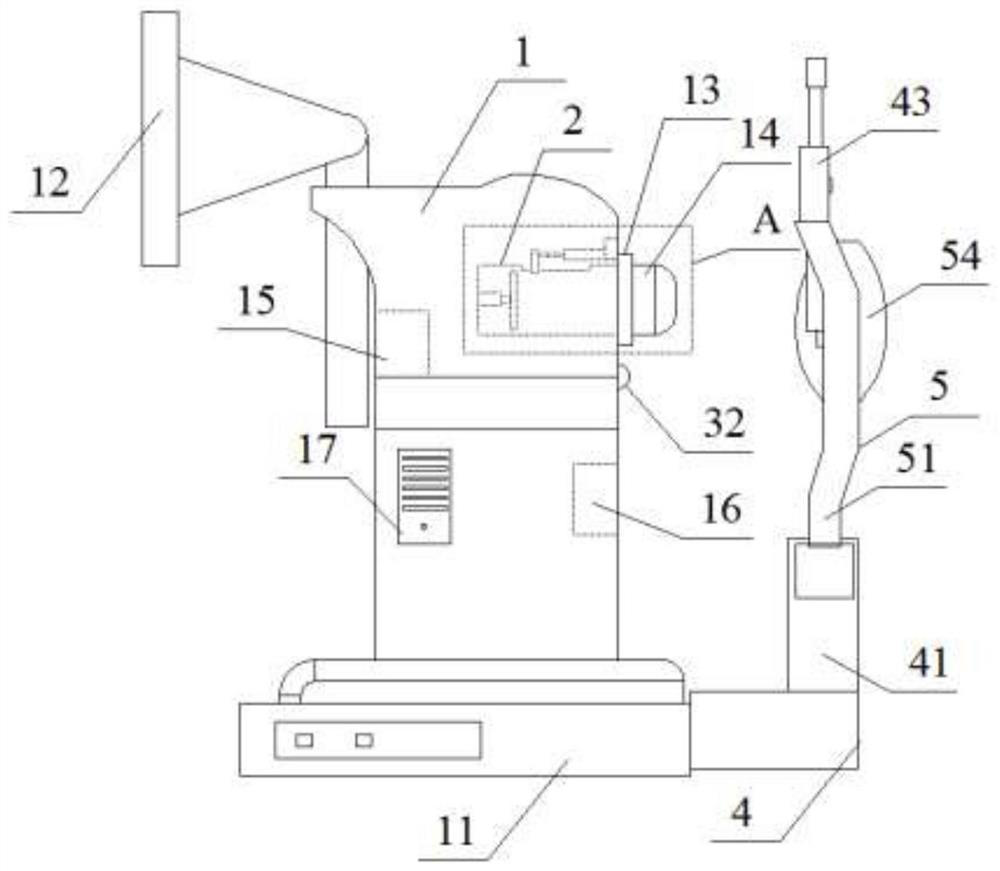Intelligent automatic eye disease screening robot
A robot and eye disease technology, applied in ophthalmoscopes, eye testing equipment, medical science, etc., can solve problems such as difficult large-scale promotion, cumbersome process, and difficulty in fundus photography, so as to save manpower and material resources, speed up inspection, and benefit The effect of promotion
- Summary
- Abstract
- Description
- Claims
- Application Information
AI Technical Summary
Problems solved by technology
Method used
Image
Examples
Embodiment 1
[0039] Such as figure 1As shown, an intelligent automatic eye disease screening robot includes a main body 1 for providing energy and data analysis, a positioning module 2 for automatic positioning of eyeballs, and a shooting module 3 for shooting faces and eyes. For fixing the head holder 4 of the patient's head,
[0040] Such as figure 1 , 2 As shown, the bottom of the main body 1 is provided with a base 11, the front side of the main body 1 is provided with a display screen 12, the upper part of the rear side of the main body 1 is provided with an inspection slot 13, and a focusing tube 14 is embedded in the inspection slot 13, and the focusing tube 14 extends to Outside the main body 1, a groove 141 is opened on the upper part of the focusing tube 14 located inside the main body 1, and a data analysis module 15 for obtaining eye refraction data and corneal curvature data is provided inside the main body 1, and a storage module for storing data 16. One side of the base 1...
Embodiment 2
[0059] This embodiment is basically the same as Embodiment 1, except that a group of rotating motors 57 for controlling the rotation of the first connecting column 52 in the arc-shaped groove 511 are provided inside the clamping module 5;
[0060] Such as Figure 9-11 As shown, wherein, the bottom of the first connecting column 52 is provided with a slider 521, the bottom of the arc groove 511 is provided with a chute 513 for sliding the slider 521, the chute 513 is T-shaped, and the chute 513 is close to the patient's head The inside of one end is provided with a rotating motor 57, and the rotating motor 57 rotates along the slide rail 514 provided with the inside of the column 51. The output end of the rotating motor 57 is connected with a clip 571, and the upper end of the clip 571 is provided with a slider 521 for sliding. groove, the column 51 at the bottom of the slanting block 55 is provided with a groove for elongating and rotating the slanting block.
[0061] After t...
experiment example
[0063] The eye disease screening robot of the present invention was clinically tested, and 100 patients with conjunctivitis, 100 patients with keratitis, 100 patients with ametropia and 100 normal people were selected to use the eye disease screening robot of the present invention. Test, the test results are shown in the table below:
[0064] Table 1 Statistical table of examination results of various patients
[0065] Conjunctivitis Keratitis Refractive error normal 96 97 94 113
[0066] As can be seen from the test results in the above table, the eye disease screening robot of the present invention has a screening accuracy of 96% for patients with conjunctivitis, 97% for patients with keratitis, and 97% for patients with ametropia. The screening accuracy rate is 94%. It can be seen that the eye disease screening robot of the present invention can screen and diagnose eye diseases of patients with a low misdiagnosis rate, which can meet the needs of...
PUM
 Login to View More
Login to View More Abstract
Description
Claims
Application Information
 Login to View More
Login to View More - R&D
- Intellectual Property
- Life Sciences
- Materials
- Tech Scout
- Unparalleled Data Quality
- Higher Quality Content
- 60% Fewer Hallucinations
Browse by: Latest US Patents, China's latest patents, Technical Efficacy Thesaurus, Application Domain, Technology Topic, Popular Technical Reports.
© 2025 PatSnap. All rights reserved.Legal|Privacy policy|Modern Slavery Act Transparency Statement|Sitemap|About US| Contact US: help@patsnap.com



